Introduction
Ever wondered how VFX artists create magic on screen? Dive into the world of VFX on autopilot with the top 12+ AI tools that empower artists to unleash their creativity like never before.
Artificial intelligence VFX technology opens up new possibilities for artists, allowing them to push the boundaries of imagination.
Discover how these innovative tools are revolutionizing the way visual effects are crafted, making complex tasks simpler and enabling artists to achieve more in their craft.
Explore the best AI tools for VFX, offering unparalleled capabilities in enhancing visual effects.
1) Runway ML
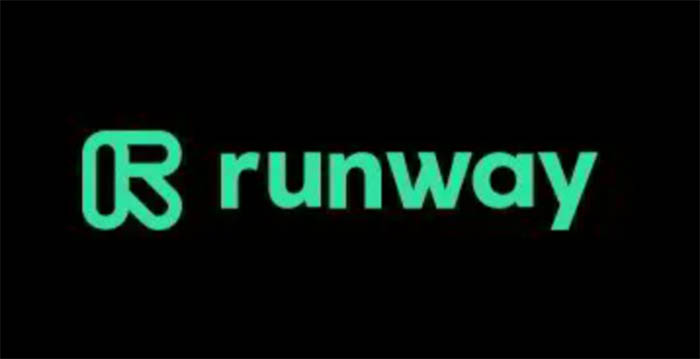
Image Source – https://rebelcorp.in/
Runway ML is a smart computer program that can help video editors and visual effects artists work faster and better. It uses advanced math to automatically do tasks that normally take a lot of time.
- One big thing it can do is rotoscoping. This means tracing around objects in a video to separate them from the background.
- Normally an artist has to draw around the object in every single frame, which is very tedious. But Runway can study the video and figure out where the object is automatically.
- It also has a tool for removing things you don’t want in the shot, like wires, rigs, or other objects.
- The program analyzes what’s around the unwanted object and intelligently covers it up to make it look natural.
- Low-quality or grainy videos can be improved too.
- Runway uses math to increase the resolution and clarity, getting rid of noise and blur. So even rough footage can be cleaned up for visual effects work.
- Other cool features include estimating depth to make things look 3D, transferring painting styles onto videos, and creating smooth slow motion by generating new frames between the existing ones.
- The best part is Runway is made for artists of any skill level to use easily.
- The controls are simple and visual, not requiring coding. This helps artists try new AI tools without a big learning curve.
Overall, Runway can automate boring tasks so human artists can focus on their creative vision instead of getting bogged down.
It’s a digital helper that aims to empower, not replace, visual effects talent.
2) Dall-E 2
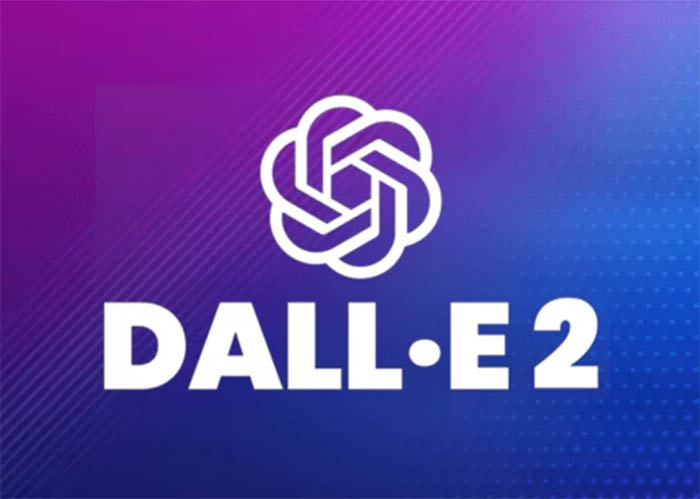
Image Source – https://www.softwebsolutions.com/
Experience the magic of using AI in the VFX and film industry, as it enables filmmakers to achieve realistic effects and captivating visuals.
Instead of struggling to draw or find the perfect reference photo, you simply type what you imagine, like “A realistic robot sitting at a park bench underneath a willow tree.”
- Dall-E will then use its knowledge of images, objects, scenes, and art styles to synthesize a unique picture matching that weird prompt.
- The AI was trained on billions of online images to understand how to combine different elements from its visual knowledge in new ways.
- So it can not just render basic objects and scenes, but creative hybrids and artistic interpretations too.
- Since VFX often requires visualizing imaginative creatures, vehicles, environments, and more, having an AI that can draft initial concepts from text is very powerful. It provides infinite inspiration and iterations.
- Artists can refine the AI images by giving new text tweaks. Or they can edit, composite, and paint over them in a traditional art tool.
- Either way, Dall-E accelerates the initial visioning and exploration stage.
- The AI is also constantly learning and updating its capabilities based on user feedback.
- So it will only get better at understanding complex prompts and creative styles over time.
- Of course, Dall-E isn’t a replacement for human artists, but more of an ideation multiplier.
The human art directors and VFX supervisors are still needed to craft the final polished visuals telling the story.
But Dall-E can handle the heavy lifting of rapidly prototyping out-there concepts first.
3) Midjourney
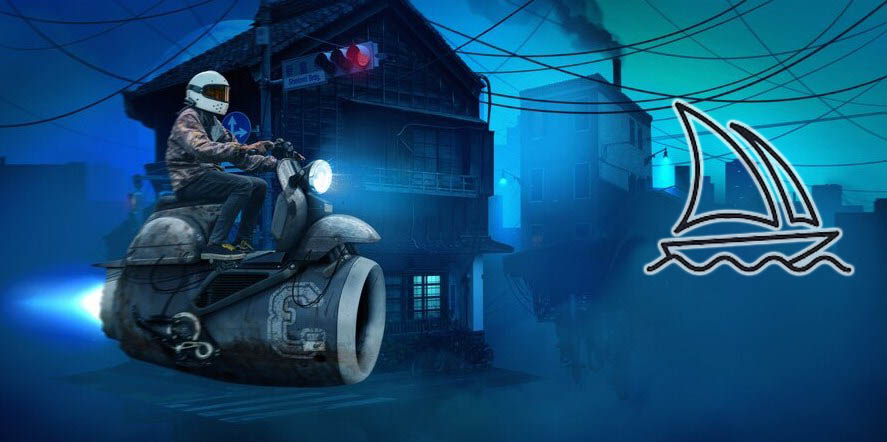
Midjourney is another AI that can conjure up images just from text descriptions.
But what makes it particularly great for VFX is its ability to generate highly detailed fantasy art and characters.
- By studying millions of sci-fi, comic, and concept art pieces, Midjourney learned how to render imaginary scenes and beings with intricate anatomy, textures, lighting, and atmospheres.
- Things that would take a human artist many hours to precisely illustrate.
- The AI allows tweaking by adding all kinds of text modifiers too, like art styles, render quality, body positioning, and more.
- You can endlessly iterate until the character or environment design feels perfect.
- Midjourney is also uniquely suited for storytelling through its ability to generate multiple panels or frames showing different perspectives or a chronological sequence.
- This can be invaluable for prevising storyboards or initial shot concepts for a VFX sequence.
- The images start at a low resolution but can be pressed to cinema quality for importing into 3D software or used as texture painting references once the design is nailed down.
While not a full replacement for 3D modeling or matte painting, Midjourney accelerates the impact of AI in the VFX industry by building a brainstorming stage by cheaply and rapidly visualizing the wildest imaginations.
It’s a powerful AI co-pilot for fueling creativity.
4) Deforum
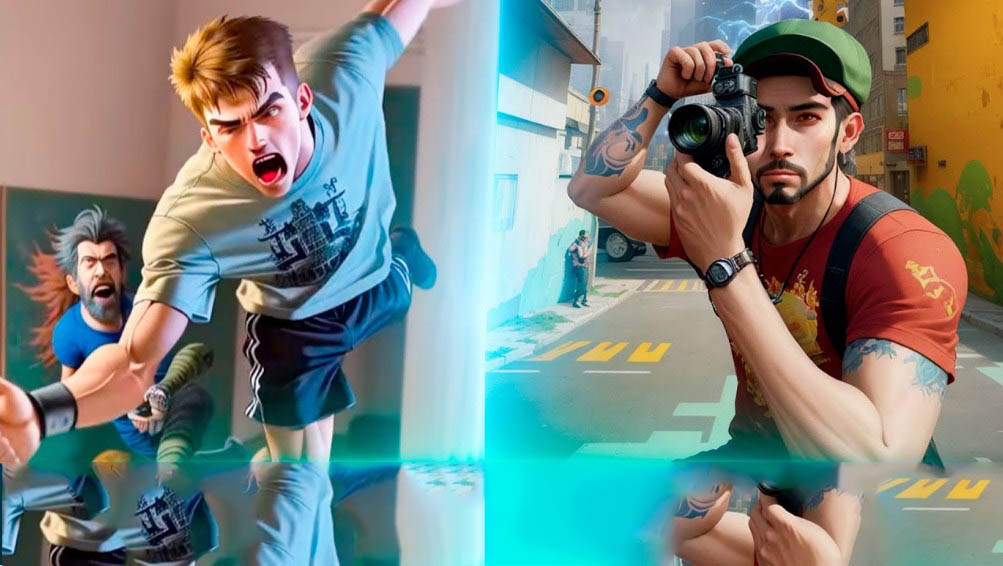
Deforum is an AI-powered tool that can create incredibly smooth slow-motion video effects.
It is one of the best AI tools for VFX, elevating the quality and efficiency of visual effects production.
- It does this by generating brand-new frames that seamlessly fit between the existing frames of footage.
- Normally when you just slowed down a regular video clip, you’d get stuttery motion because there simply aren’t enough individual frames to smoothly stretch out the timing.
- It looks unnatural and distracting.
- But Deforum uses advanced artificial intelligence solutions to examine the frames you do have and calculate how the motion should flow in between them.
- It then crafts those missing frames from scratch with perfect interpolation.
- So instead of 24 frames per second video being choppily stretched to 12fps for 2x slo-mo, Deforum can boost it up to 120fps or higher for that classy, elegant super-smooth camera blur effect.
- This AI slow-mo is incredibly useful for artificial intelligence VFX-heavy action sequences like fight choreography, stunt work, explosions, or even simple things like hair or cloth movements.
- Those high frame rates make everything look hyper-realistic and more immersive.
- The AI’s deep learning models understand the physics of real-world motion.
- Using Deforum is simple too. Just drag in your regular speed clip and choose the slow-mo factor you want – 2x, 4x, or higher, it can go up to crazy thousands of FPS if needed. Then let the AI chug away processing those in-betweener frames.
- You can even go frame-by-frame to tweak or manually alter the AI’s interpretation in places if needed.
- But usually, it nails these frame interpolations accurately right out of the box.
- The quality increase is dramatic compared to old-school methods.
- VFX shots that may have previously looked stiff or jittery can get new life breathed into them by Deforum’s AI smoothing capabilities.
- For editors working on big VFX action beats, Deforum can be an incredible time-saver compared to manual frame-by-frame animation.
- Just run your clips through it and the AI does the heavy-lifting interpolation work while you concentrate on compositing and polishing.
The impact of AI in the VFX industry is undeniable, with revolutionary tools transforming how visual effects are created and implemented.
5) Topaz Video AI
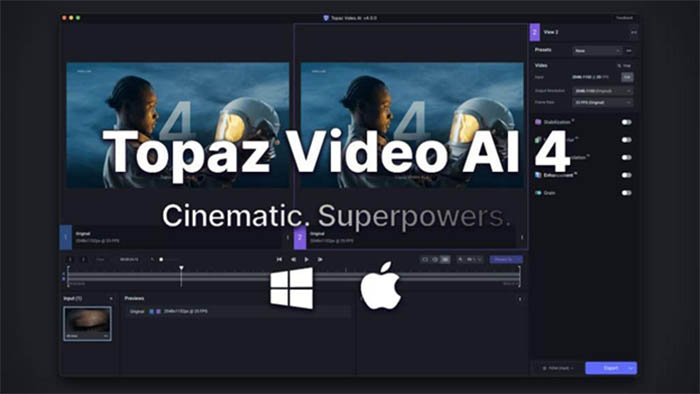
Image Source – https://www.canonwatch.com/
Topaz Video AI is one of the best AI tools for VFX that can upgrade the quality of your video footage using smart computer algorithms.
It’s like having a super-powered enhancement machine in your editing toolkit.
- One of its best tricks is upscaling resolution.
- So if you have an old low-res video clip, Topaz can analyze it and generate a higher-resolution version with more detail and sharpness.
- The AI figures out how to add in the missing pixels without things looking blurry or artefacts.
- It can also stabilize shaky footage to make it smooth, without the need for bulky camera rigs.
- The software detects camera movements and motion blur and then calculates how to counteract it for steady, professional-looking video.
- Topaz does amazing noise reduction too.
- Grainy, low-light videos can have their ugly speckles and fuzziness completely removed, leaving a clean high-quality image behind.
- This cleans up shots for better compositing and effects work.
- Other features let you upscale frame rates, adding new frames to turn 24fps into 60fps for smoother motion.
- You can convert between video formats, adjust colors and exposures, and even recover incomplete or corrupt video files.
- The interface lets you simply drag and drop your video files, then quickly adjust sliders to choose the level of enhancement you need. No complex settings are required.
While it can’t match multi-million dollar studio gear, Topaz Video AI gives indie filmmakers and artificial intelligence VFX artists an affordable way to squeeze more quality out of less-than-ideal footage.
It’s like having an AI production truck to uplevel your source material.
6) Photoshop Neural Filters
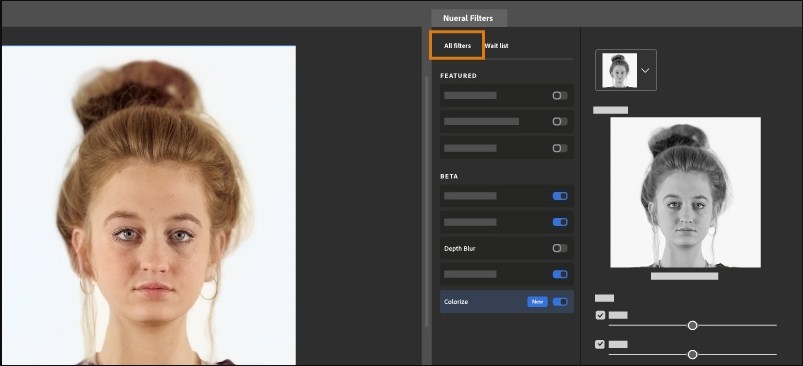
Adobe’s Neural Filters use AI to supercharge many image editing tasks inside Photoshop.
They can analyze and modify pictures in intelligent ways that would be incredibly difficult manually.
- Some top filters include Smart Portrait, which can automatically retouch and enhance faces and portraits.
- It can smooth skin, brighten eyes, adjust facial features, and more with a click.
- The Colorize filter lets you push a single color into an image while retaining the shading and details. Great for tinting scenes with a visual tone or mood.
- Subject Select rapidly outlines separate elements in an image for advanced selections and masking. No tedious lasso drawing is required as the AI breaks it down accurately.
- Style Transfer composites the look and feel of different artworks onto your photo, like blending it with a Van Gogh painting. Perfect for creative texture experiments.
- There are also Neural Filters for spinning a photo into a seamless pattern tile, coloring crude sketches, removing entire objects from scenes, and uprezing small images for printing.
- More filters get added over time too, as Adobe trains the AI models on new capabilities.
- Like one recent edition that can parse human poses from 2D images for 3D character animation.
- While the filters have limitations, they accelerate many routine photo tasks down to one-click operations.
- The AI handles the complex computational heavy lifting behind the scenes.
This frees up Photoshop jockeys to spend more time on high-level creative work, not tedious pixel-pushing. A milestone in democratizing professional image techniques.
The democratizing impact of AI in the VFX industry allows artists of all skill levels to access advanced tools and techniques.
7) Makesense.ai
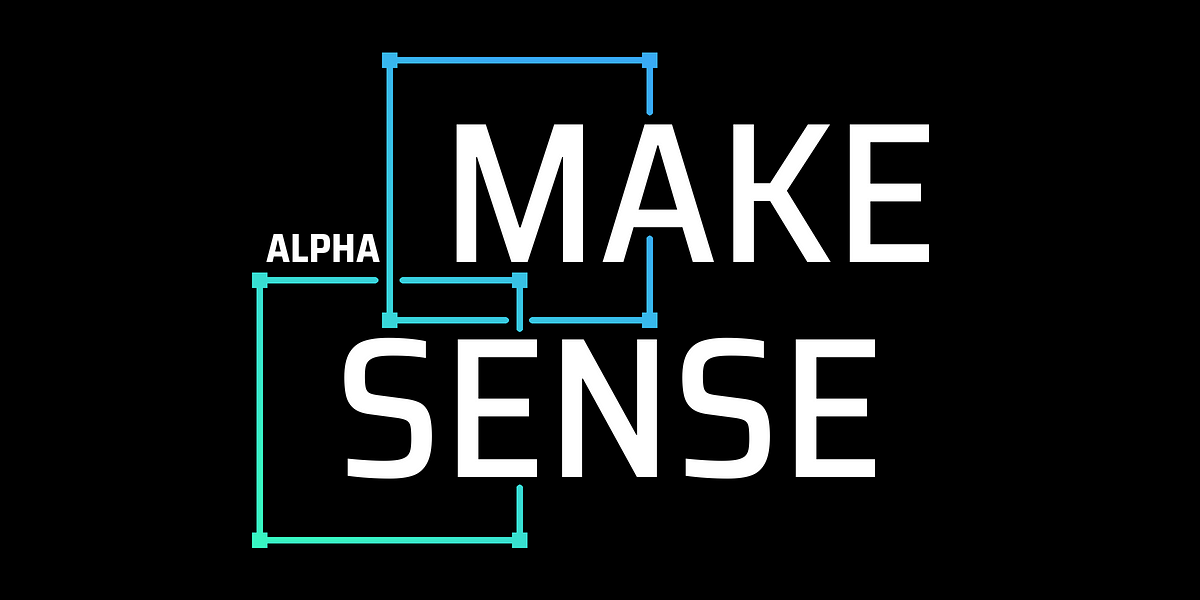
Makesense.ai is an AI toolset designed to specifically help the VFX and film industries.
It aims to automate away many of the time-sucking tasks that eat into production budgets and schedules
Learn how using AI in the VFX and film industry is transforming how movies are made, bringing stunning visual effects to life.”
Automated Rotoscoping and Cutouts
One of the marquee features of Makesense.ai is its ability to automate the tedious process of rotoscoping and cutting out elements from video footage.
This is hugely valuable for VFX artists working on compositing, creating clean plates, or integrating CG elements.
Traditionally, rotoscoping required frame-by-frame manual tracing to isolate individual elements like actors, props, or vehicles from the background.
It was extremely time-consuming and laborious work.
But Makesense’s AI can analyze the video and automatically detect and separate those foreground subjects for you.
The software uses machine learning models trained on understanding motion, edges, colors, and visual cues to precisely track the boundaries of on-screen elements.
In a matter of minutes, the AI can generate refined masks and mattes for the isolated subjects across an entire clip’s timeline.
What might have taken a human operator days or weeks is compressed to a single click.
Removing Unwanted Objects
In addition to cutouts, Makesense also excels at removing unwanted elements or blemishes from shots using AI inpainting technology.
Has a crew member accidentally wandered into the frame?
A visible rig wire arcing across the scene? Or maybe just a distracting sign, log, or other object you need to cleanly remove?
Makesense can automatically detect and mask those unwanted artefacts.
Then its AI will intelligently re-synthesize replacements for the negative space, reconstructing the scene to appear as if that element was never there.
The AI models understand the concepts of depth, textures, edges, and environment continuity.
It can regenerate backgrounds, floors, walls, or landscapes to cover the removed object in a photorealistic and seamless manner.
This automated object removal is a huge timesaver over manually painting out, cloning stamps, or rotoscope every little imperfection and eyesore.
Simply let the AI do the heavy digital gardening for you.
Set Extensions and Digital Environments
Building off those inpainting capabilities, Makesense can also use AI to extend or rebuild entire environments from scratch based on limited backgrounds or plates.
So for instance, if you have an actor on a small green screen set, the software could analyze that backdrop and procedurally generate a photorealistic extended CG environment like a city street, interior room, mountain vista, or anything else.
For VFX studios, this could allow dramatically improving location shoots on a budget or punting entire CG environments to the AI to rapidly prototype and block out first.
The software interface lets you tweak parameters and iterate on these AI-generated environments too.
Adjusting things like time of day, seasonal looks, adding props and set dressing, and more. It provides a powerful CGI head start rather than building everything from scratch.
The power of AI in the VFX industry, streamline processes and empower artists to focus on their craft.
Easy Integrated Pipeline
While Makesense’s AI capabilities are impressive, the development team has worked hard to make them accessible through a user-friendly integrated toolset.
Instead of having to pass files through disparate apps or script out machine learning models, Makesense bundles all its core features into a unified UI that hooks right into standard VFX production pipelines.
The primary interface lets you easily batch process and visualize the AI rotoscoping, inpainting, and background generation results.
With simple viewport tools to tweak, refine, or override portions of the AI interpretation as needed.
For technical users, Makesense exposes more robust scripting controls through a Python API and node-based workspace.
This allows customizing AI parameters, building more complex multi-stage workflows, or integrating other proprietary machine learning models.
The power of AI in the VFX industry is evident in its ability to automate complex tasks and streamline production workflows.
8) D-ID Creative Reality Studio
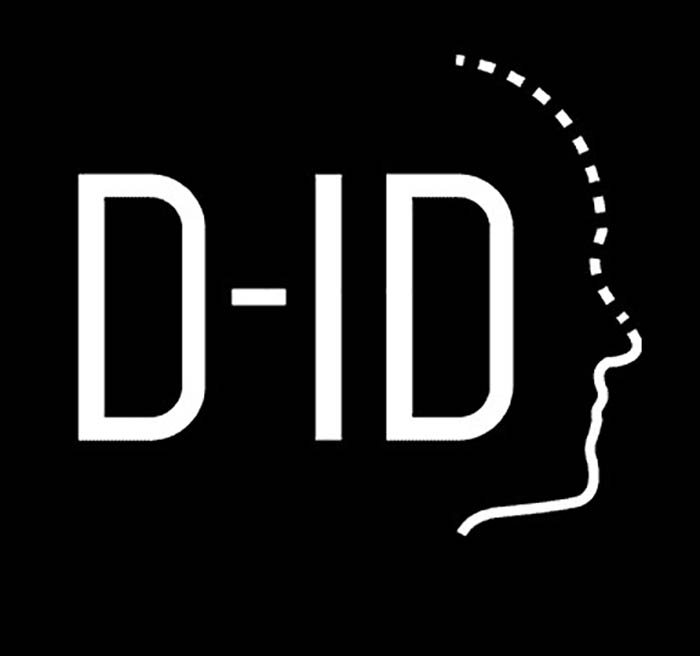
D-ID’s AI tools are all about bringing digital characters to life through facial animation and lip-syncing.
This is super useful for VFX shots involving digital doubles, virtual assistants, animated spokespeople, and more.
Their marquee product is the Creative Reality Studio. It uses advanced machine learning development services to automatically animate a 3D character’s face to match the audio dialogue.
The AI analyzes the speech and generates natural lip movements, eye blinks, head tilts, and micro-expressions in perfect sync.
This saves animators from having to manually keyframe and adjust every tiny facial movement – the AI does the heavy lifting. They just need to polish and art-direct the performance.
The software can also easily retarget the same voiced animation across multiple 3D character rigs or generate photorealistic digital people from scratch based on video clips of a real actor’s performance.
On the creative side, the Studio allows artists to easily experiment with different personality profiles and emotional overtones driving the character expressions.
You can make the digital personality seem more energetic, pensive, friendly, or assertive with simple slider adjustments.
9) Nvidia Omniverse
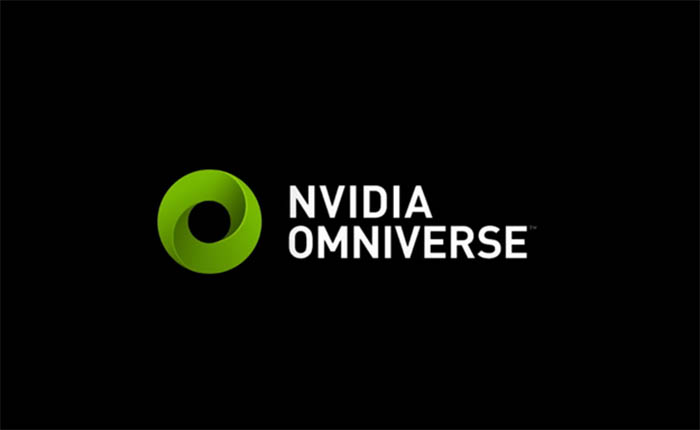
Image Source – https://www.geospatialworld.net/
Nvidia Omniverse is like a super-powered collaborative platform for creating virtual 3D worlds, scenes, and simulations. And it’s turbocharged by AI to make this process faster and easier.
Experience the sheer power of AI in the VFX industry, where groundbreaking technologies are transforming the way visual effects are created.
- At its core, Omniverse connects artists into a shared virtual space powered by Nvidia’s powerful graphics processors and real-time physics engine.
- Multiple teams can interact and iterate on the same 3D scene simultaneously from different locations.
- For VFX, this allows real-time virtual production filmmaking.
- Directors can scout digital environments, block out shots with digital stand-ins, and visualize the final effects as they’re created, all within Omniverse.
- Built-in AI tools include intelligent material scanners that can analyze real-world objects and procedurally generate ultra-realistic physics-based textures and surfaces.
- Perfect for digitizing practical VFX props and set pieces.
- There are also AI agents that can automatically populate and enliven virtual environments.
- They can synthesize things like crowds, traffic, vegetation, particle effects, and atmospheric details with little human effort.
- Omniverse’s real powerhouse is its simulation engines for accurately modeling light transport, physically-based rendering, rigid and soft body dynamics, and more.
- With AI acceleration, these can run orders of magnitude faster than traditional offline rendering.
- For instance, VFX supervisors can leverage Omniverse to rapidly prototype alternate digital set extensions, test out different lighting scenarios, and iterate on simulated pyrotechnics, destruction, and water effects in real-time.
It’s a convergence of AI, real-time rendering, and virtual production that’s ushering in a new era of hyper-accelerated VFX workflows.
10) Weta Digital’s AI Tools

Weta is the pioneering VFX studio behind the mind-blowing effects of movies like Lord of the Rings.
And they’ve been hard at work developing their own proprietary AI tools to push the boundaries further.
One key area is facial performance capture and animation.
Their machine-learning models can accurately extract an actor’s facial expressions and translations from video footage alone, no special rigs are required.
This data can then automatically drive and animate a digital character with life-like nuance.
For digital characters generated from scratch, Weta has AI that can automatically animate lip sync, coherent eye movements, and natural micro-expressions from just an audio track.
Saving months of laborious hand animation.
Their AI also tackles the daunting task of animating digital cloth, hair, and fur with ultra-realism.
Analyzing how these strands and fibers react and move based on simulated dynamics, air flows, and collisions.
On the environmental side, Weta leverages AI to procedurally generate incredibly intricate vegetation, terrains, urban cityscapes, and fully lived-in worlds based on just high-level parameters.
They’ve even developed AI tools for automating certain compositing and clean plate techniques, like automated rotoscoping and wire/rig removal paired with background reconstruction.
Of course, these cutting-edge AI tools are tightly guarded and proprietary to Weta’s production pipeline.
However, they demonstrate the limitless potential for machine learning to revolutionize and augment VFX artistry in the future.
From character animation to scene composition, using AI in the VFX and film industry empowers creators to push creative boundaries.
11) DeepMotion
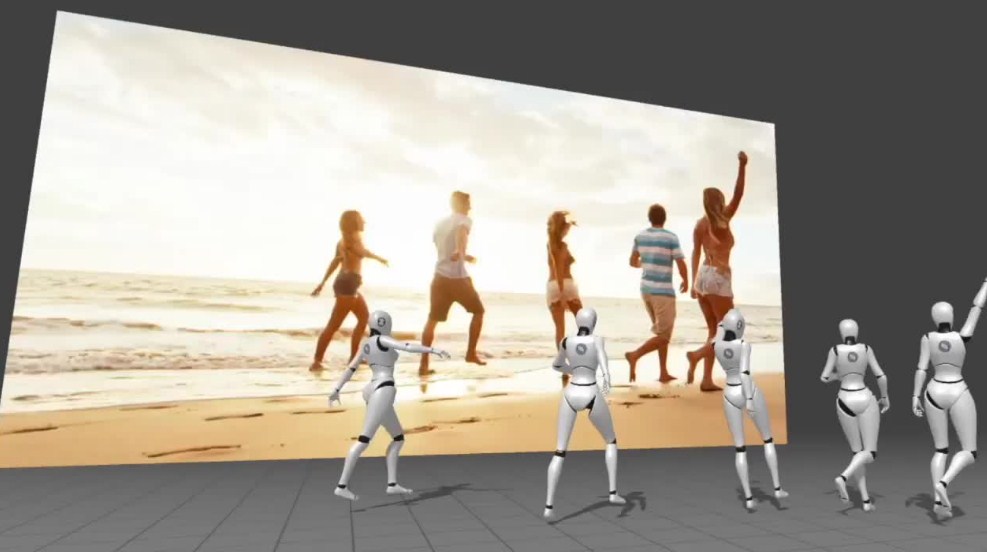
DeepMotion specializes in using AI to solve core challenges in motion capture and character animation.
- Their deep learning algorithms can extract precise human motion data from video alone with no special sensors required.
- This democratizes advanced mocap capabilities for smaller VFX studios that don’t have access to expensive camera rigs and dedicated stages.
- All they need is regular video footage, which DeepMotion will process into clean 3D skeletons and motion curves ready for animation.
- Their AI models were trained extensively on massive motion capture databases.
- So they deeply understand the mechanics of how bodies move and can infer it even from difficult angles, views, or suboptimal video sources.
- DeepMotion doesn’t stop at basic motion tracking either.
- Through similar neural network approaches, they can “motion re-target” that captured animation data onto different character rigs of any size and physiology.
- So you could capture an actor moving, then have the AI instantly re-target and apply that performance to animating a giant ogre, slithering snake creature, or even something as abstract as a shape-shifting liquid metal robot.
- For solo animators or smaller teams, this AI-powered motion workflow can hugely accelerate the performance animation process for believable digital characters, eliminating months of tedious manual keying.
- The AI assistance also extends to procedural motion generation, where DeepMotion can rapidly synthesize things like realistic idles, walks, runs, and reaction animations based on just text prompts.
- Expanding an animation library infinitely.
- While incredibly advanced, DeepMotion aims to have these AI tools be approachable by both technical and non-technical users.
With node-based visual tools, intuitive controls, and drag-and-drop interfaces. Making high-quality motion capture and animation accessible to any creative.
12) Flowframes
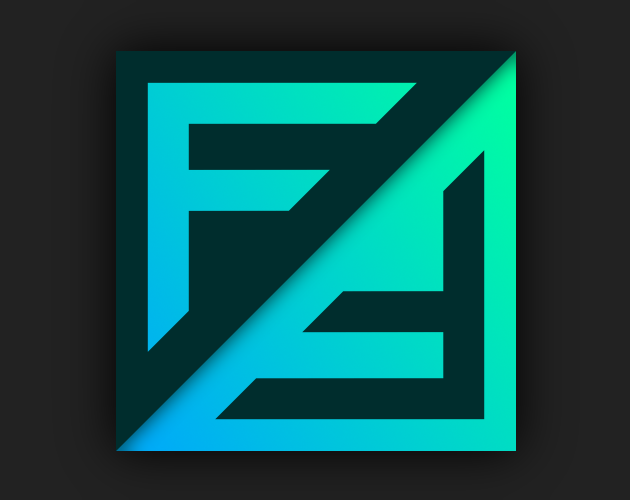
Flowframes is an innovative AI video editor aimed at VFX artists and filmmakers looking to accelerate their post-production workflows.
It utilizes machine learning to automate and simplify many tedious editing tasks.
- One core capability is intelligent transcription and automated video breakdowns.
- Just upload your raw clips and Flowframes will use speech recognition to generate transcripts and automatically segment the footage into labeled sub-clips – things like “Actor walks into the room” or “Car drives away.”
- This saves massive amounts of time over having to meticulously watch and tag every clip by hand.
- The AI does that grunt work while presenting an organized overview that’s easy to search and skim through at a glance.
- From there, Flowframes AI can analyze the segmented footage and automatically generate multi-angle sequence edits for dialogue scenes.
- It calculates ideal cut points and camera switches based on industry techniques and cadences.
- For visual effects shots, there are dedicated AI tools for tasks like automatic wire removal, object removals, greenscreen keying assistance, and more.
- Flowframes excels at motion tracking too.
- Just draw a rough bounding box and the AI will accurately track that object’s motion path through the entire clip, enabling seamless effects inserts.
- On the audio side, it simplifies tasks like separating speech tracks from background noise and room tone.
- As well as automatic audio sync for overdubs and effects layering.
- The app itself uses a clean browser-based interface with cached video processing in the cloud.
No dealing with complex NLE timelines or local storage frustrations. It’s video editing through an AI assistance layer.
13) Wonderdyne
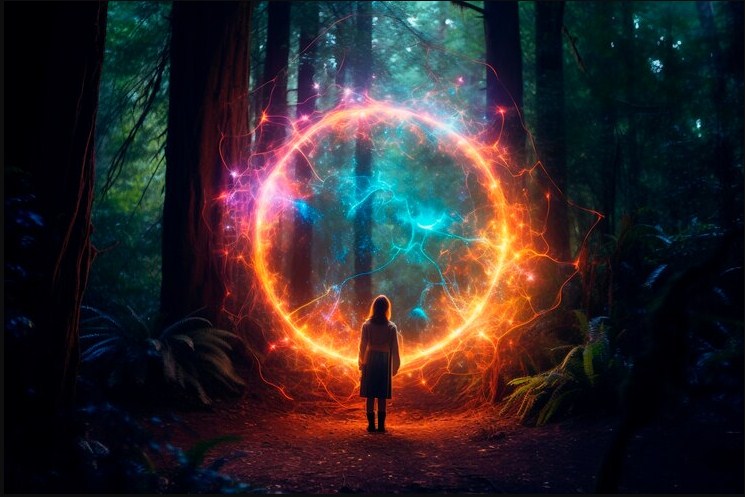
Wonderdyne uses deep learning neural networks to solve some of the trickiest video processing challenges for VFX studios – denoising, upscaling, and compression artefact removal.
Their AI models were trained on pristine video sources, learning to analyze and extract the true detail and motion information from noisy real-world footage.
Then they can effectively re-synthesize a cleaned-up and enhanced version.
For noisy or grainy VFX plates captured in low-light conditions, Wonderdyne’s denoising and upscaling can work wonders in recovering crisp, texturally rich imagery from that sub-par input. Which makes for higher-quality renders and comps.
On the distribution side, highly compressed video codecs like YouTube and streaming services often bake in ugly artefacts, color banding, and detail loss.
Wonderdyne has a unique Remastered Mode that can undo this damage, reconstructing the original detail and fidelity from the compressed video alone.
This allows VFX facilities to easily deliver remastered products to distributors that look indistinguishable from the uncompressed raw masters, without needing to re-render or manually touch-up artifacts.
Wonderdyne aims for its AI solutions to be simple plugin workflows that slot seamlessly into existing pipelines.
Unleash your potential in VFX with the support of generative AI consulting services, providing tailored solutions to enhance your workflow.
What AI tool or feature would you like to see developed next to further empower VFX artists? Share your thoughts and ideas in the comments below!
FAQs
1) How much training is required to use AI tools like these?
Most AI tools now have very user-friendly interfaces that require little training. They aim to streamline workflows, not complicate them.
However, some more advanced tools may need to be familiar with their specific controls.
2) Can the results from AI tools be trusted for professional VFX work?
While incredibly powerful, AI tools should be considered as assistants, not replacements for human oversight.
Their results usually need some refining and quality control from experienced artists. But they provide a huge head start.
3) How expensive are AI tools for VFX?
Many AI tools now have affordable pricing for indies or small studios. Basic applications may even offer free trials. But premium, production-level tools can still be a significant investment.
4) Do I need a powerful computer to run VFX AI software?
Most AI tools leverage cloud computing, so you don’t necessarily need a high-end local machine.
But a decent internet connection is required. Some AI software does optimize for GPUs though.
5) Will using AI replace the need for traditional VFX skills?
No, AI tools are focused on automating repetitive tasks, not replacing artistic fundamentals.
Skills like storytelling, problem-solving, and creative direction will still be essential when interfacing with AI assistance.





